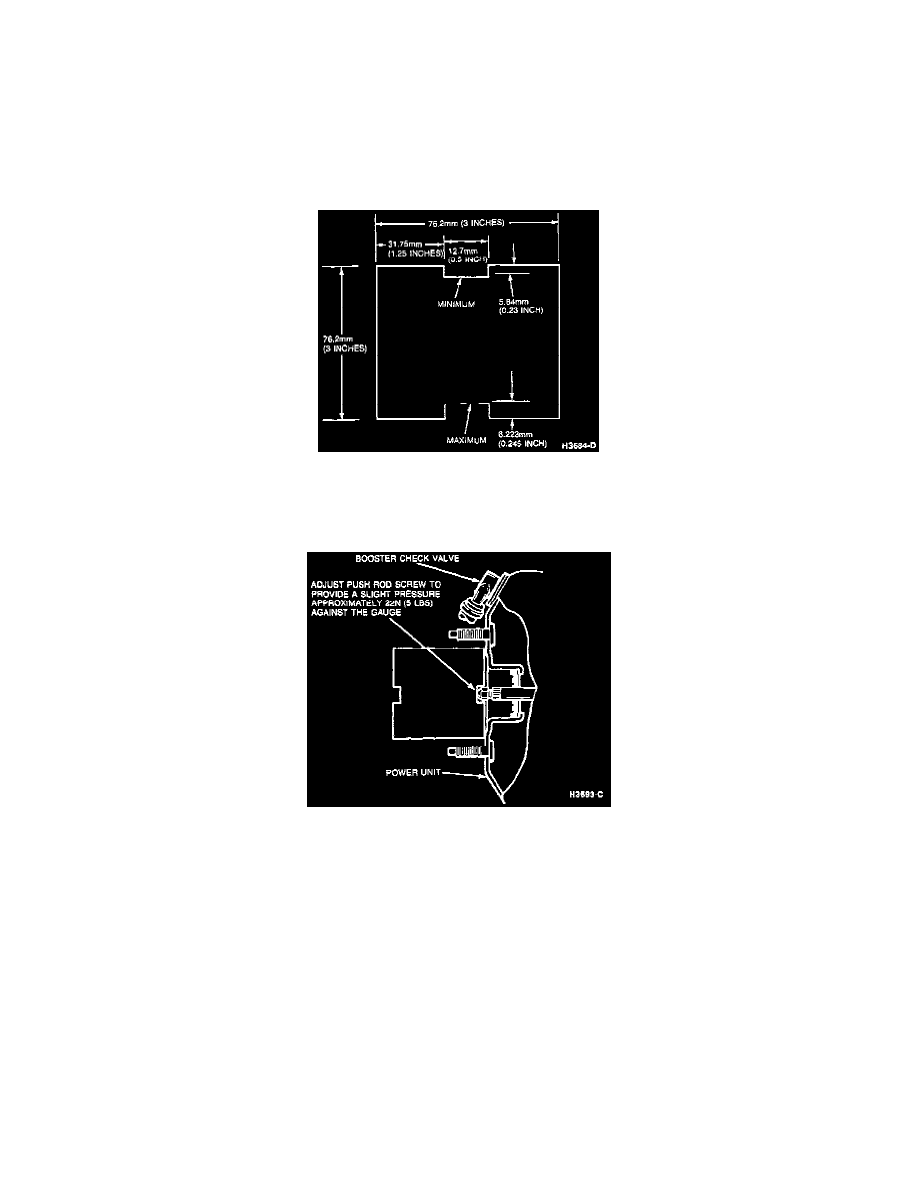Sable V6-183 3.0L VIN U FI (1998)

Brake Master Cylinder: Adjustments
The power brake booster has adjustable push rod (output rod) which is used to compensate for dimensional variations in assembled power brake
booster. The push rod length is adjusted after each power brake booster power unit has been assembled in production. A properly adjusted push rod
that remains within power brake booster after it was assembled in production should never require service adjustment.
A power brake booster suspected of having improper push rod length will indicate either of the following:
-
A push rod which is too long will prevent brake master cylinder piston from completely releasing hydraulic pressure and cause brakes to drag.
-
A push rod which is too short will increase brake pedal travel and cause a clunk or groaning noise from power brake booster.
If necessary, booster push rod length can be checked with push rod gauge using the following procedure.
Brake Booster Gauge
1. Without disconnecting brake tubes, disconnect brake master cylinder and set it away from power brake booster. Brake master cylinder must be
supported to prevent damaging brake tubes.
Checking Booster Push Rod Length
2. With engine running, check and adjust push rod length so it is between 5.84 mm (0.23 inch) and 6.22 mm (0.245 inch) as checked by gauge
shown. A force of approximately 22 N (5 lbs.) applied to push rod with gauge will make sure push rod is seated within the power brake booster. If
adjustment is necessary, grip rod only by knurled area.
CAUTION: Do not adjust push rod length too long or brake drag could result.
3. Install brake master cylinder on power brake booster. Gradually alternate tightening of retaining nuts to 21 - 29 Nm (16 - 21 ft. lbs.).
